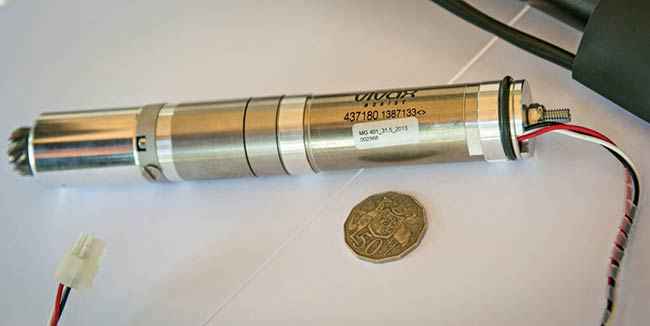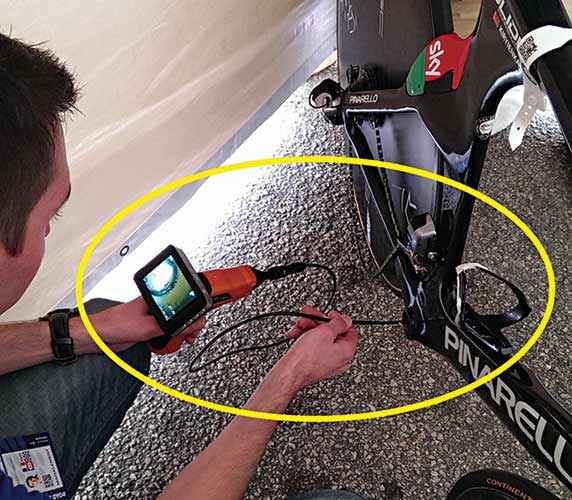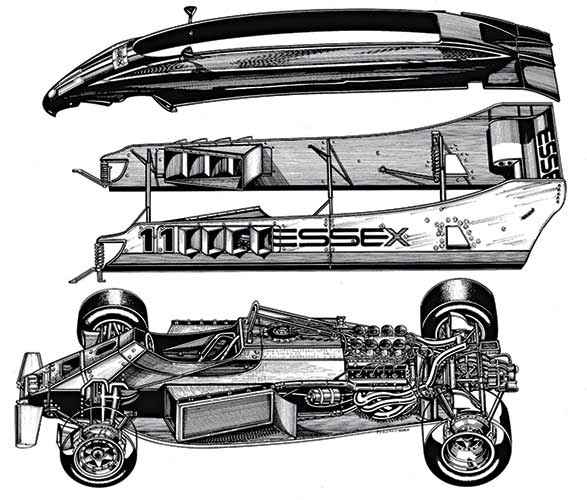When geeks decide to cheat

The consequences are not only hilarious, some would even call their ingenuity praiseworthy
It isn’t just our intellect that separates us from the beasts – apes are smart and exhibit problem solving skills, and some birds are even able to use tools just like us. Humans are only truly defined by their unique ability to think out of the box. We may lack fangs or claws and come naked and otherwise defenseless into the world, but we have managed to cheat the seemingly insurmountable odds and survive as a species – all thanks to our big brains and the ability to think laterally.
It’s quite evident that we as a species cannot be bound by rules; much less by those set by fellow humans. That’s also why we have a tendency to cheat in everything ranging from something as benign as videogames to matters of graver ramifications such as medical and engineering exams. It’s also no surprise that geeks are prolific cheaters – they have big brains and can think laterally.
Winning with Bots
The highly competitive world of videogames is no exception to this rule. When the prize pool at international e-sports tournaments runs into millions of dollars, it’s not surprising to find enterprising geeks cheating their way to victory. This is exactly what happened when several big-name professional gamers were found using aimbots and map hacks for an unfair edge in the 2014 DreamHack CS:GO tournament. The application of bots also extends to games that aren’t as competitive.
RPGs such as World of Warcraft, Elder Scrolls Online, Diablo III, or any other games that require quite a bit of grinding for attaining gold or experience points, are common targets for wily geeks employing script bots. There are also cases where gamers have rigged up servo-motor equipped contraptions to controllers and created real-world robots to grind their way to high levels in online games such as Destiny.
Cheating isn’t just reserved for games either. Vancouver-based developer Justin Long, T Machine is a Tinder bot that employs a sophisticated algorithm incorporating facial recognition technology to select the best match for you. You train it with the first 60 swipes, and then it takes over while you can go do other things, such as cheat in games.
This $300 shoe was banned by the NBA for making players faster and helping them jump higher
Mechanical Doping
Real-world competitive sports such as cycling don’t remain untouched by cheats either. Rumoured to exist for years, mechanical doping is a term used to describe professional cyclists using cycles rigged with electric motors that can generate anywhere between 60 to 250 watts of extra power. This is a considerable advantage when you consider the fact that an average Tour de France competitor can only generate anywhere between 350 to 400 watts on technical climbs anyway.
Mechanical doping was finally confirmed early this year, when a motor was discovered within the frame of a cycle raced by a Dutch cyclist expected to win the Cyclo-Cross World Championships. The governing bodies have now adopted a host of gadgets and electromagnetic sensors to try and catch cheaters, but human ingenuity ensures that cheaters stay a step ahead. They are now allegedly experimenting with electromagnetic wheels. These wheels employ magnets hidden away within carbon-fibre wheels to generate a boost of up to 60 watt.
Olympic Grade Cheating
Nothing is sacred in the quest to win at any cost. Not even the Olympics. Even as the neverending war between the performance-enhancing drug industry and World Anti-Doping Agency (WADA) rages on, geeks have managed to slip through the cracks and give athletes sophisticated equipment that endows them with an unfair advantage. Informally known as technology doping, this is a relatively new branch of high-tech cheating that leverages advancements in nanotechnology, exotic engineering materials, and aerodynamics to enhance athletic performance. It’s ironic how on the one hand athletes are given severe penalties and even lifetime bans for doping, but on the other hand technology doping flies right under the radar.
The most egregious of these examples is the infamous LZR swimsuit introduced in the 2008 Olympics. Developed by Speedo, the specialised suit employed a combination of high-tech materials and cutting-edge computer-aided design to make swimmers slippery and greatly reduce water resistance. What’s more, the suit’s design not only allowed better oxygen flow to muscles, thus enhancing performance, but it also trapped air to aid buoyancy. To put its efficacy into perspective, swimmers wearing the swimsuit were responsible for 23 out of the 25 world records set during the 2008 Olympics.
The Speedo LZR swimsuit was so good that it was responsible for 43 world records in 2009
If you didn’t have one, you were at a genuine disadvantage. The Olympic governing body FINA has since banned the outfit. American speed skaters took the same route by adopting a specialised uniform designed by fashion label Under Armour in conjunction with Lockheed Martin – you know, the same guys responsible for the SR-71 Blackbird, F-22 and F-35 fifth-generation jet fighters! Obviously the guys who make supersonic stealth fighter jets know a thing or two about aerodynamics. So far the sports authorities haven’t objected to these suits, but it could just be a matter of time once they start breaking world records by the dozen. It’s the same story with BMW pairing up with the US bobsled team to create an all-carbon fibre, lightweight and aerodynamically efficient sled that is bound to give it the decisive edge.
You can’t go wrong when Lockheed Martin designs your skating uniform
With geek cheats that make athletes go fast, we have one aspect of the Olympic motto figured out. But what about the one dealing with going higher? Well, the specialised shoe maker Athletic Propulsion Labs have you covered in that regard. Their $300 flagship basketball shoe dubbed ‘Concept 1’ received the ultimate endorsement when the NBA banned it in 2010. The shoe uses a combination of specialised foam, air vents, and springs to create what the designers describe as the “springboard effect”. The shoe is claimed to allow basketball players to jump several inches higher than usual. Moreover, the shoes unique suspension system and energy transfer capability is touted to shave off up to nine seconds off the average runners mile time. No wonder NBA was quick to ban these high-tech kicks.
Motorsports: Cheating or Innovation?
Motorsport easily takes the cake when it comes to cheating. And that’s partly because it’s a sport where engineers are nearly as important, if not more important than the drivers themselves. That’s where the problem of cheating transforms into a rather abstract concept. The job of an automotive engineer, in this case, is to push the envelope of technology and employ every bit of lateral thinking to reinterpret the rules to work around the performance limiting regulations. The very concept of cheating in this respect is just another way of looking at the pursuit of innovation and engineering ingenuity. And there’s a lot of ingenuity going around in this sport.
Very few automotive engineering endeavours have affected motorsport as profoundly as aerodynamics. To put this into perspective, more than half the fuel consumed by a regular road car travelling at a speed of just 60 kmph is spent to overcome the air resistance or drag. Because drag increases with the square of vehicle speed, aerodynamic efficiency becomes one of the most important factors dictating race car performance. Although the concept of inverted wing was first employed in the IndyCar arena, it was Colin Chapman who turned aerodynamics into a gamebreaker with the Lotus 88 Formula 1 car.
The car was the first one to employ the unique twin-chassis system comprising of an independently sprung inner chassis housing the cockpit and the outer one comprising the aero package. The idea was to make the bottom absolutely flat to speed up air flow and bolstered with skirting to enhance the effect. The outer chassis was equipped with wings designed to slow down airflow. The resulting difference in airflow employs the Bernoulli effect to create a tremendous amount of downforce. Enough of it to give the car an unfair advantage. The ensuing sweeping victories initially had everyone puzzled, but the FIA eventually caught up to Chapman’s genius and banned the car from competing. To this day, FIA lays down strict regulation regarding front diffuser/rear wing areas and the overall downforce generated.
The Lotus 88 dominated Formula 1 by leveraging aerodynamics to produce tremendous grip
Aerodynamics might be a major aspect, but you can’t really go fast without absolute power. Formula 1 engineers are used to tweaking turbochargers to maximum power for qualifying, which involves far fewer laps as compared to the main race. This is mainly because engine endurance isn’t a major consideration given the circumstances. BMW, however, managed to squeeze out 1500 bhp from a puny 1.5 litre engine way back in the ‘80s. In comparison, a 2016 Mercedes Formula 1 car can only muster 900 bhp. Interestingly, BMW wasn’t exactly employing rocket science to beat everyone at the power game. The engineers only chose to do away with durability in order to push the engine to the very precipices of performance. The engine would be allowed to run hot enough to last long enough to complete qualifying, after which it would be summarily discarded. FIA soon figured out what BMW was doing and enforced stricter rules on engine changes.
Spy Gadgets and Exams
Passing the act of cheating off as human ingenuity may seem fairly kosher, but applying the same logic to exams is a slippery slope few would like to go down. While the former may entail the triumph of the resourceful rule breakers at its worst, the latter involves incompetent cheaters getting an undeserved chance to toy with your life and limb. Be it medical or engineering exams, cheaters employ a variety of high-tech telecommunication gadgets to game the system. A sophisticated cheating racket in Thailand involves professional tutors equipping candidates with specialised glasses containing hidden earphones and tiny micro-cameras; all of which are linked to smartwatches that allow the tutors to livestream exam solutions back to the candidates. Other slightly less sophisticated setups involve spy pen cameras used to relay questions to tutors, who then communicate the answers through trusty Nokia feature phones paired with discreet earphones.
Munnabhai MBBS is more fact than fiction
Cheating Democracy
Just when you think cheating can’t get any worse, we are faced with the sort of scandal that could potentially lead to the very failure of democracy. This is the sort of miscarriage of justice that eventually leads to the fall of civilisations. In more specific terms, we refer to Electronic Voting Machine (EVM) fraud. While paper voting is the most secure means to conduct polling, it’s quite wasteful, slow, and tedious. Unfortunately, there’s no clear security standard enforced within the myriad EVM standards that cater to nearly 70-percent of the US electorate.
EVM system programmers and hackers alike have testified in courts about the susceptibility of these machines to tampering either before or after the voting process. In fact, most of these EVM don’t even use any form of encryption and are vulnerable to vote manipulation as well as multiple vote fraud. And if you think the ability to thwart and bypass these supposedly secure EVMs would require expensive and sophisticated equipment, think again because hackers at Symantec Security Response have already demonstrated that these machines can be hacked by devices that are easy to acquire and cost no more than $15 a pop.
Rigged EVMs: an illusion of democracy
Geeks shall Inherit the Earth
It is rightly said that geeks shall inherit the Earth. Or was it the meek? At any rate, it is not just our thirst for knowledge and excellence that has made us the dominant species. Our ability to think laterally to solve difficult problems has helped us evolve against deep odds. The tendency to cheat is a direct byproduct of this innate instinct. It is amply evident that its ramifications change depending on how we go about it. Cheating becomes ingenuity and innovation when applied to motorsport. But at the same time, it’s a grave social and political evil when education and democracy is involved. At the end of the day, the power to choose between what’s right and what’s convenient squarely rests upon the shoulders of the same enterprising geeks.
This article was first published in September 2016 issue of Digit magazine. To read Digit's articles first, subscribe here or download the Digit e-magazine app for Android and iOS. You could also buy Digit's previous issues here.













